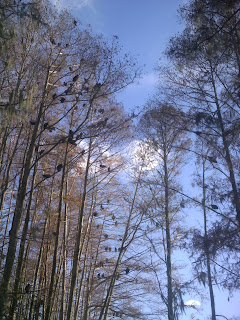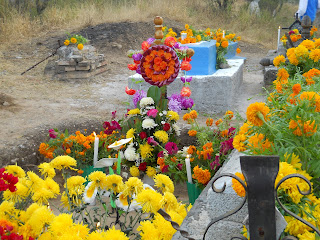Pershing Rifles. When I left home for college back in '71, I was of course a bit homesick. And the world was big (There were more students in some of my classes then there had been in my entire school). So, just to find My People, I joined the ROTC--after all, I had been around the military my entire life. Women in ROTC were new--this was the first year that female cadets were accepted.
But it was still not My People--the majority of people were in ROTC because it was a way of avoiding going to Viet Nam. Still in search of My Tribe, I pledge the Pershing Rifles, an ROTC organization. Pledging was hard--I was the First Woman Ever to pledge, and some people didn't like that. And the pledge program was very demanding. But I liked the people, made some good friends, and eventually married one of my pledge brothers.

Forty years later, I find that I am an Icon. Part of the current pledge training program is to learn that Florida State University had the first female member in history. And every couple of years the pledges are sent to find me--to poke me and see if I'm still breathing, and to tell stories of the Good Old Days. So here I am with this year's crop of pledges.
Apache: if you look back at the blog posts for March 2010, you'll see pictures of Graemalkin in her basket on the counter--we had given up the battle of "try to keep the cat off of the counter" and not only put her basket up there, but built a set of steps so she could get to it. Alas, time took her away from us. But we didn't move her basket--somehow it was a shrine to a tough little cat that we both loved.
Well, maybe a shrine to us--but it looked like a comfy bed to Apache. Cats are such opportunistic creatures. So, once again, the bed (with the heated pad) has a fine cat to sleep in it. This odd pose is a favorite of his.
And Projects (and I swear I took pictures before they went off to recipients, but don't seem to find them). Despite the busyness of taking over a class, I did manage in the last month to spin and weave an alpaca scarf, knit another alpaca scarf, make a set of finger tip towels of handpun cotton (a gift for my boss at the Museum who is retiring--the cotton was grown on the farm there), and a pair of alpaca mitts (I at least got a picture of those). I've got another warp ready to go on the loom--but that's another post.
Birds, revisited: A couple of posts ago I wrote about seeing thousands of birds when out kayaking. It was so breathtaking that we went to the same area again, just to see if it had been a fluke.
No fluke--it's a winter roost, and once again we sat enthralled as birds beyond imagination came flying in. OK--so Bob had to take a shower when we got home--it's a small price to pay.
.




















































